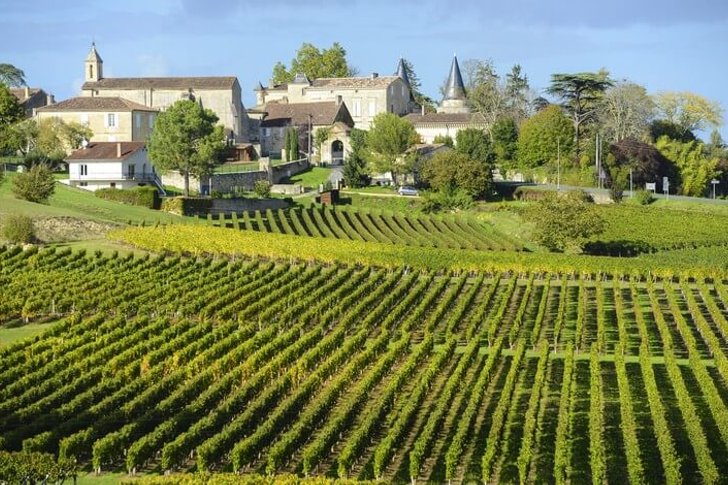The first vineyards in Bordeaux appeared thanks to the ancient Romans. It was they who laid down the traditions of winemaking, which subsequently glorified this region throughout the world. The Romans also gave impetus to shipping and the development of trade relations, thanks to which, through the centuries, Bordeaux turned into the largest cultural center of France, in no way inferior to Paris.
First of all, Bordeaux is known for its gastronomic traditions. Who hasn't heard of the great local wines? Moreover, the graceful, smooth, aristocratic streets and squares of the city attract thousands of tourists every year. Here you can feel the true French sophistication and the ability to enjoy life. The refined atmosphere of Bordeaux can be felt in the Porte Lune, on the square of Saint André Cathedral and on the banks of the picturesque Garonne River.
What to see and where to go in Bordeaux?
The most interesting and beautiful places for walking. Photos and a short description.
- Port of the moon
- Exchange Square
- Parliament Square
- Kincons Square
- Grand Theatre
- Rogan Palace
- Cathedral Saint André
- Pe-Berland Tower
- Basilica of Saint Michael
- Church of Notre Dame in Bordeaux
- Museum City of Wine
- Museum of Aquitaine
- Grosse Cloche Tower
- Cayo Gate
- St. Catherine street
- Submarine base
- Jacques Chabant-Delmas bridge
- Pont de Pierre bridge
- River Garonne
- Wine tours and excursions in Bordeaux
Port of the moon
The Port of the Moon is an allegorical name for the architectural ensemble of the historical center of Bordeaux, which is located near the Garonne (Gironde) River. Picturesque buildings in the classical style are located in a semicircle on its banks. The complex of buildings includes: the building of the town hall, the grand theater, the Place de la Bourse, Sainte-Catherine, the gates of Cayo and the hotel Labottier. The Port of the Moon has played an important strategic role since Roman times.

Exchange Square
The area is located near the Garonne embankment. Its architectural appearance in the Baroque style took shape in the 18th century. The project was developed by A. J. Gabriel. The square is surrounded by the buildings of the Customs Museum and the Exchange Palace. The main decoration of this place is the Fountain of Mirrors, which is a wide and flat surface filled with water. With the help of special sprayers, tiny drops are sprayed into the air, which sometimes causes fog over the area.

Parliament Square
A small square in the Italian style, located near the Cathedral of Bordeaux. Most of the magnificent mansions surrounding the square were built in the 18th century. In the central part there is the fountain of the Parliament of 1865 in the neo-Renaissance architectural style, installed thanks to the efforts of G.-A. Brochon, one of the mayors of Bordeaux. Place de la Parlement is a historical monument of France.

Kincons Square
The main square of the city of Bordeaux, one of the most impressive squares in Europe. The vast spaces of Kincons can accommodate a large number of people, which is why fairs and concerts are constantly held here. In 1883, a monument to the Girondins was erected on the square - representatives of one of the political parties of the period of the Great French Revolution, which were eventually persecuted by the Convention.
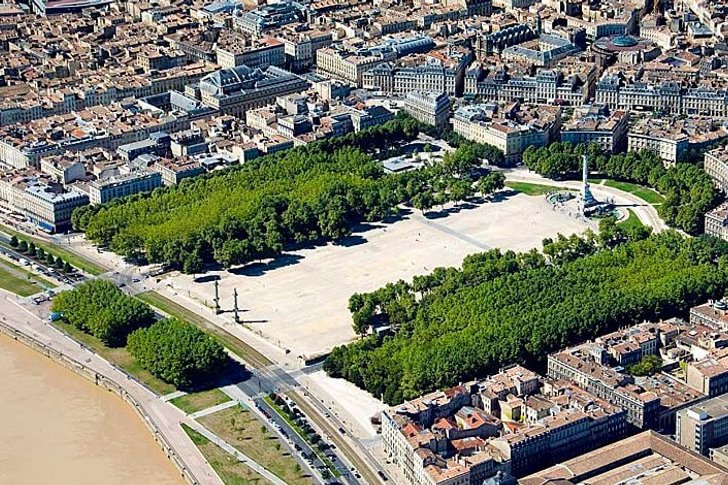
Grand Theatre
The magnificent building of the Grand Theater was erected in the classical style on the site where a Roman temple was located in ancient times. Perhaps this fact ultimately influenced the choice of the appearance of the building. The facade of the theater corresponds to the canons of the ancient Corinthian order, the portico is complemented by statues of the goddesses of the Roman pantheon. The architect V. Louis was invited for the construction. Since the 18th century, the Bordeaux theater scene has been the center of the city's cultural life.

Rogan Palace
Previously, the palace served as the residence of the Archbishop of Bordeaux - F. M. de Rogan. The complex was built in the 18th century under the guidance of the invited architect V. Louis, who also worked on the design of the Grand Theater of Bordeaux. The building changed owners several times. During the revolution, the tribunal was located here, during the reign of Napoleon Bonaparte - the imperial palace, since 1835 the building houses the Bordeaux city hall and a museum.
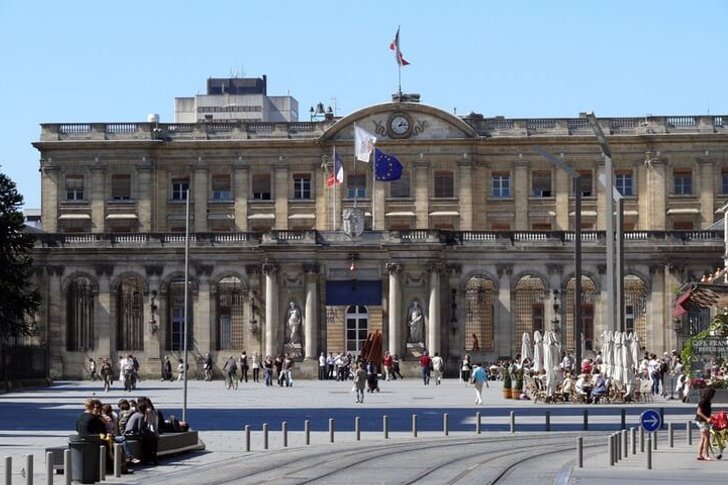
Cathedral Saint André
The Cathedral of Bordeaux, dedicated to St. Andrew (in the Orthodox tradition, he is known as Andrew the First-Called). The building was erected in the 11th century on the site of a destroyed temple of the 9th century. For a long time of its existence, the cathedral has experienced several redevelopments of the interior space and renovation of the facade. With each new reconstruction, its appearance gradually changed, while maintaining the reference Gothic features.
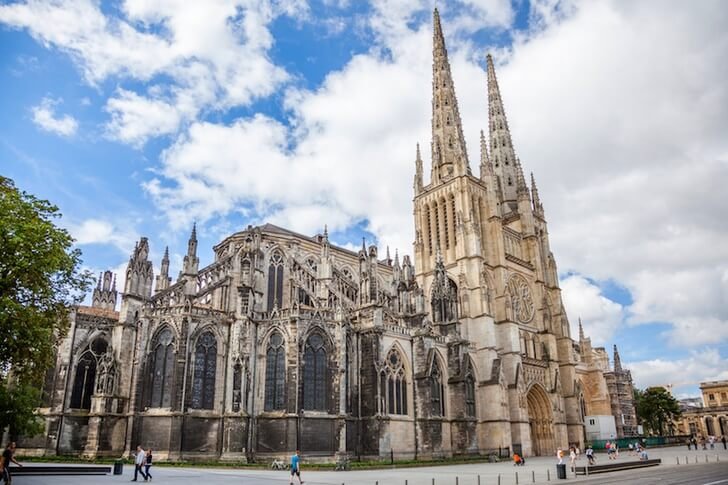
Pe-Berland Tower
The tower is located on the square of the same name, which was named after Archbishop P. Berlan. The personality of this minister of the church remained in history due to the fact that he founded a city university for poor students. The tower is the bell tower of the Cathedral of Saint André, although it is located at some distance from it. The structure was built in 1863, in 1869 an 8-ton bell was hoisted to its top.
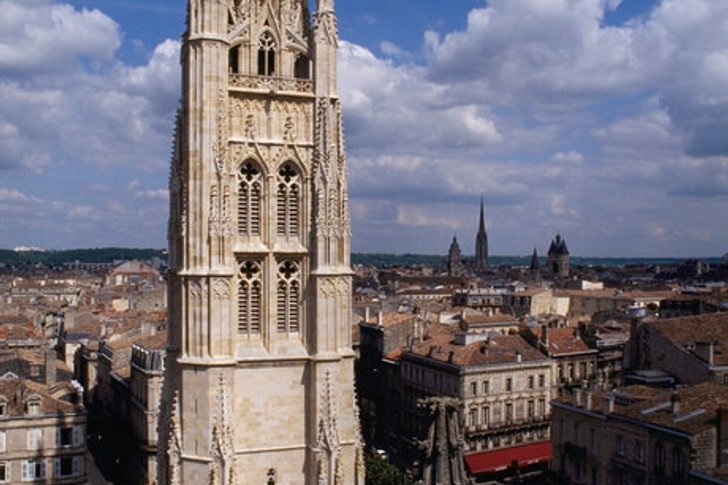
Basilica of Saint Michael
The temple is located on Place Menard, which is located near the Pont du Pierre. The building of the church was erected in the XV-XVI centuries according to the project of J. Leba. The temple is built in an elegant architectural style, known as "flaming gothic". The bell tower of the basilica is located at some distance from the main building. The bell tower is almost 115 meters long, making it one of the tallest temple structures in the world.
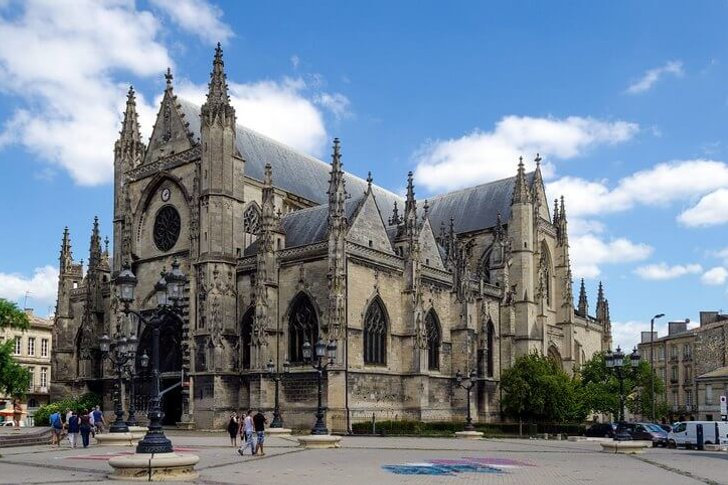
Church of Notre Dame in Bordeaux
An expressive Baroque church built at the very beginning of the 18th century. The building has a very magnificent and pompous facade with an abundance of decorative finishes, decorated with sculptures and bas-reliefs. An image of the Virgin Mary is placed on the figured stained-glass window. The internal spaces are interconnected with the help of arched galleries. The walls of the church are painted with skillful frescoes of the 18th-19th centuries.

Museum "City of Wine"
The Bordeaux region is known throughout the world for its excellent wines. You can learn more about the history of winemaking, learn more about the varieties of the drink and the features of its production in the "City of Wine". This is an interesting museum housed in a modern building that is called the "Wine Guggenheim". The museum opened in 2016 and quickly gained popularity among fans and connoisseurs of the grape drink.
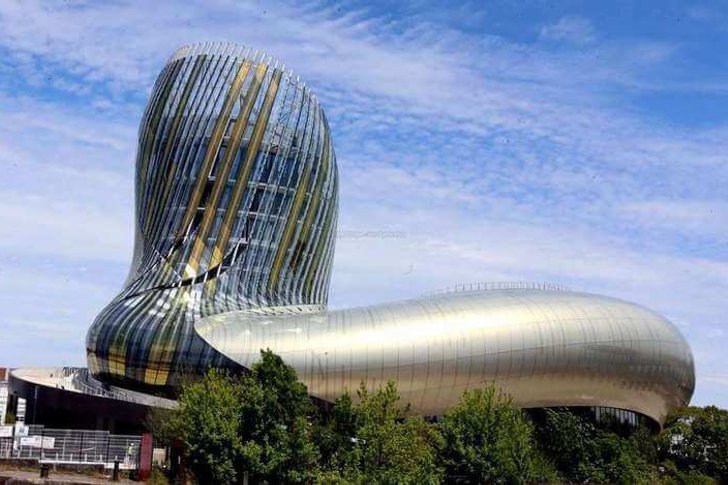
Museum of Aquitaine
In the 18th century, the Museum of Stone Sculpture was founded in Bordeaux, where artifacts from the period of the Roman Empire found in the surroundings were kept. From 1962-63 it became a regional museum of ethnography, archeology and history. The collection has existed in its present form since 1987. The exposition covers a rather extensive historical period; about 70 thousand exhibits are located on 5 thousand m².

Grosse Cloche Tower
In the Middle Ages, the tower was part of the urban fortification system of Bordeaux. It is believed that the building was erected in the 15th century on the site of the destroyed gate. The image of Grosse-Cloche is present on the city coat of arms and is a symbol of Bordeaux. The building acquired its modern look in the 18th century, when two side towers acquired cone-shaped roofs. The northern façade is decorated with figures of fabulous gargoyles; in the central part there is an astronomical clock dial.

Cayo Gate
In the 15th century, the Cayo Gate (or Palace Gate) was the main entrance to Bordeaux. The gate was erected after the victory at the Battle of Fornovo, when the troops of Charles VIII defeated the Italian army. The architectural style of the building is a transition from Gothic to Renaissance, which knocks the building out of the surrounding landscape, giving it a slight “medieval” flavor.

St. Catherine street
A street with a length of about 1.3 km., On which there are more than 200 different shops. It can be safely called the main trading artery of Bordeaux. Since the 70s. In the 20th century, the alley became pedestrian, which further increased tourist traffic. In addition to shops, there are several historical sights here, including a Gothic cross on the site of an old cemetery and the Church of St. Simeon, built in the 14th century.
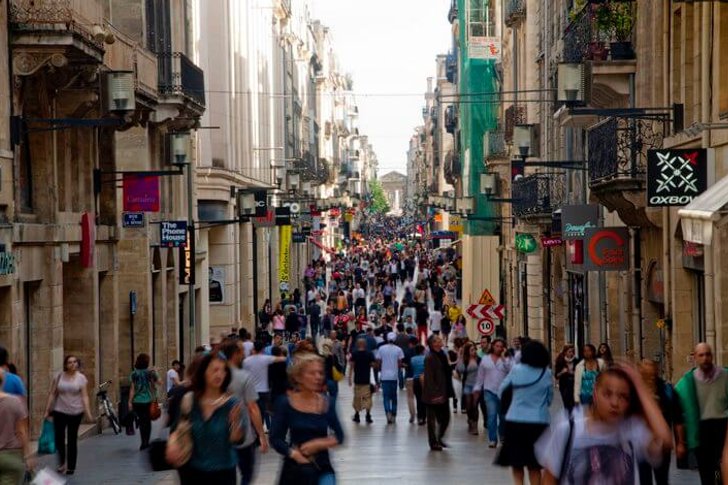
submarine base
The base was founded before the start of World War II by agreement with Hitler, when the Italian navy was stationed in this area. Italian and German submarines were based here. The place was reliably protected from bombardments, so the ships were practically not damaged during air raids. Today, an exhibition center is located on the territory of the gloomy concrete docks of the former base.

Jacques Chabant-Delmas bridge
A vertical lift bridge over the Garonne River completed in 2013. President F. Hollande and Mayor of Bordeaux A. Juppe attended its opening. The design is equipped with an elevator that lifts passengers to a height of 50 meters. Once every few days, the bridge is raised to allow the passage of ships to the harbor of Bordeaux. The structure was named after J. Chaban-Delmas, a former prime minister.
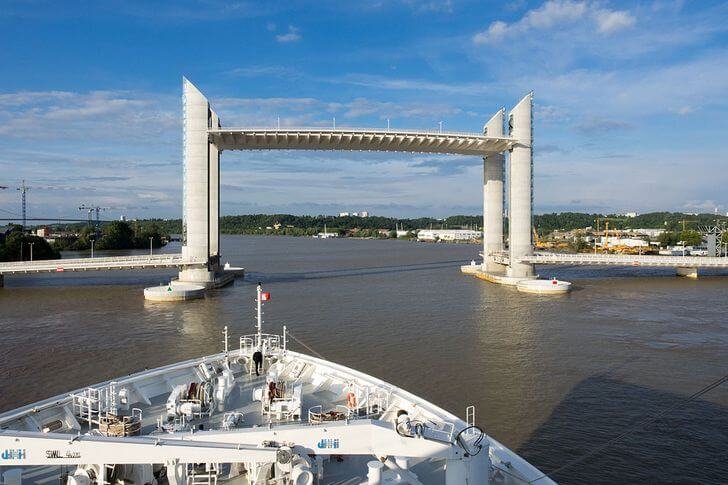
Pont de Pierre bridge
The old 19th century bridge across the Garonne, designed by C. Deshampeau. The customer was Napoleon Bonaparte himself. The design is a series of arched spans similar to ancient Roman bridges. The pillars are decorated with medallions depicting the profile of Napoleon. In the evening, the Pont de Pierre is illuminated by a system of floodlights, which gives it a very romantic look.
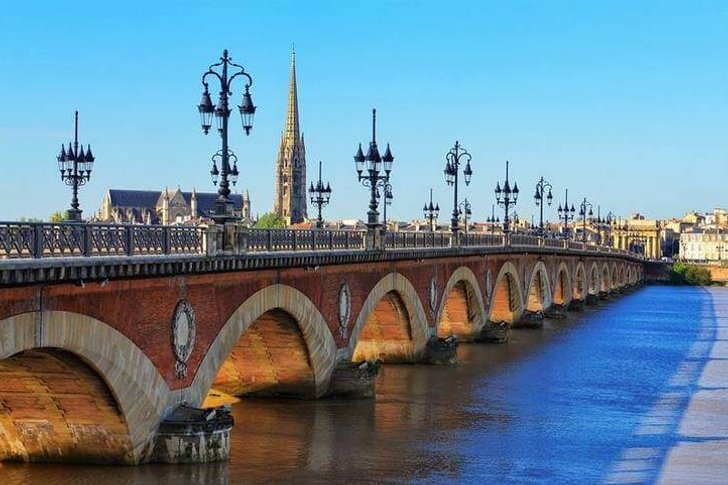
River Garonne
The river originates in the central part of the Pyrenees and flows into the Bay of Biscay. The total length of the channel is 647 km. The Garonne is an important shipping artery in France and has several hydroelectric power stations and reservoirs. The river flows through the cities of Toulouse, Bordeaux and Agen. With an enviable frequency, it spills, which causes problems in the settlements located on the banks.
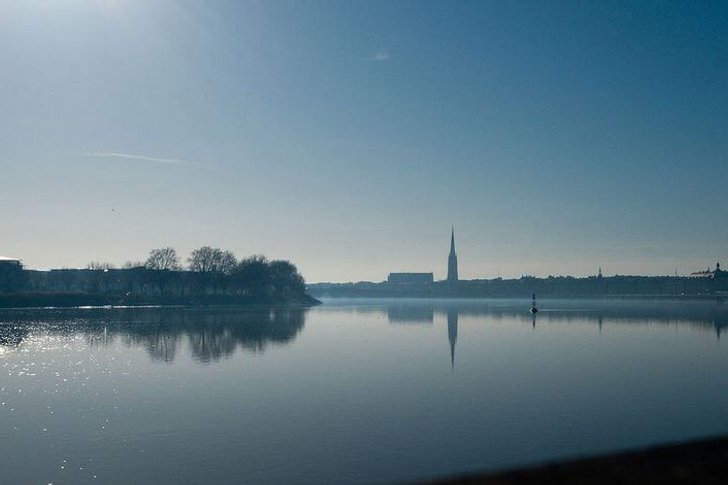
Wine tours and excursions in Bordeaux
Bordeaux is the oldest wine-growing region in France, where the best quality drinks are produced using traditional technologies. Local (and not only) travel companies offer a huge number of interesting wine and gastronomic excursions, during which tourists visit vineyards, factories, wine cellars, taste different varieties and learn to distinguish one wine from another.
